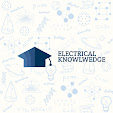Automatic Generation Control for a Power System
Automatic Generation Control for a Power System
Automatic generation control and economic load dispatch are two principal areas of concern for generation control on large, interconnected power systems. The role and aim of each is quite different, but both act on the generator through controlling the prime mover, and both vary the generation relatively slowly.
Automatic generation control (AGC) is an on-line computer control that maintains the overall system frequency and the net tie-line load exchange between the power companies in the interconnection. The common practice is to carry out generation control on a decentralized basis; that is, each individual area tries to maintain its scheduled interchange of power.
Economic load dispatch, described in Chapter 6, is also an on-line computer control, whose function is to supply the existing system load demand from all currently operating generators in the most economical manner in terms of minimal fuel cost. A variety of conditions, such as the presence of hydro along with fossil-fuel power stations, a multiarea structure for the interconnected power system, or even pollution control, can be features of an economic dispatch operation.
There are very few isolated power systems that are not connected to neighbors by means of tie lines. The power systems employ tie lines for the following reasons:
1. Tie lines allow a local or “pool” exchange and sale of power between the power companies on a predetermined schedule.
2. Tie lines allow areas experiencing disturbances to draw on other areas for help.
3. Tie lines provide a long-distance transmission line for the sale and transfer of power (e.g., on an interstate or international basis).


No comments:
If you have any doubts, please let me know